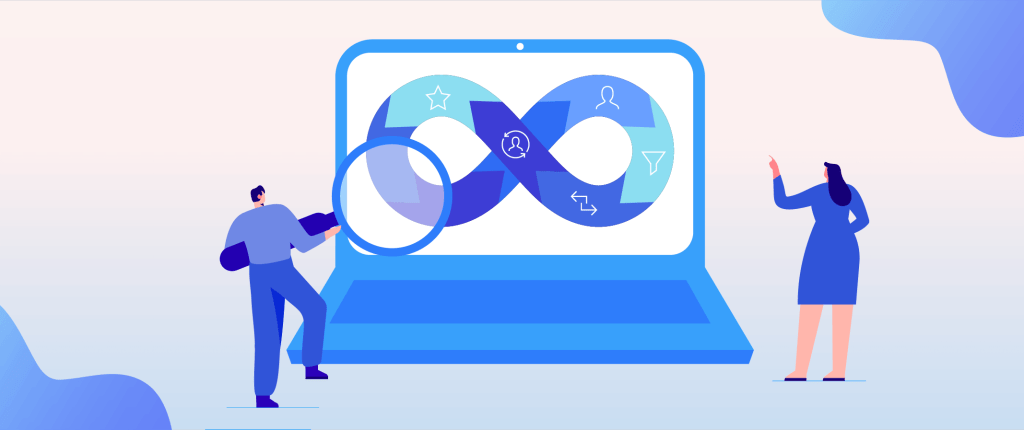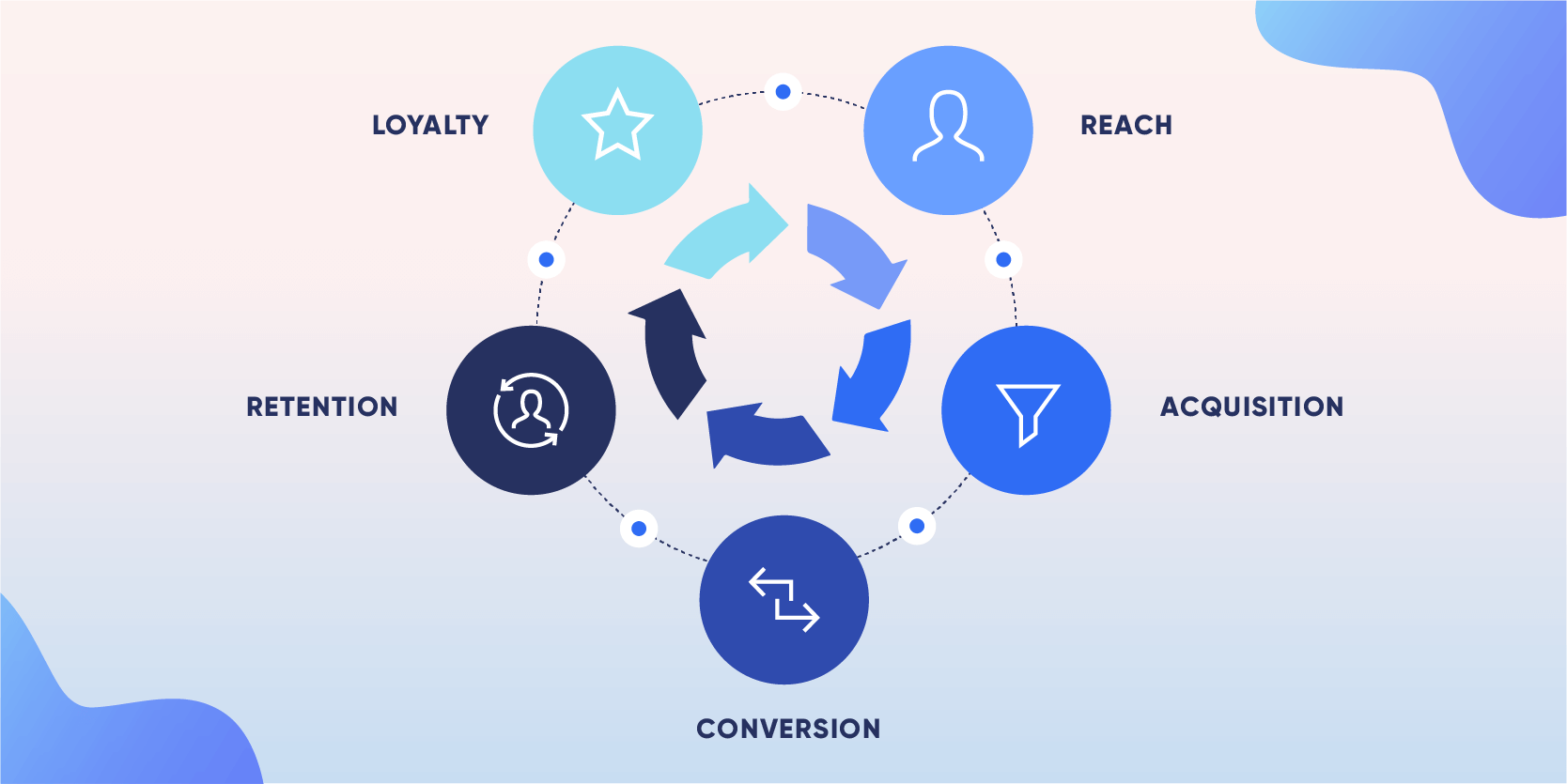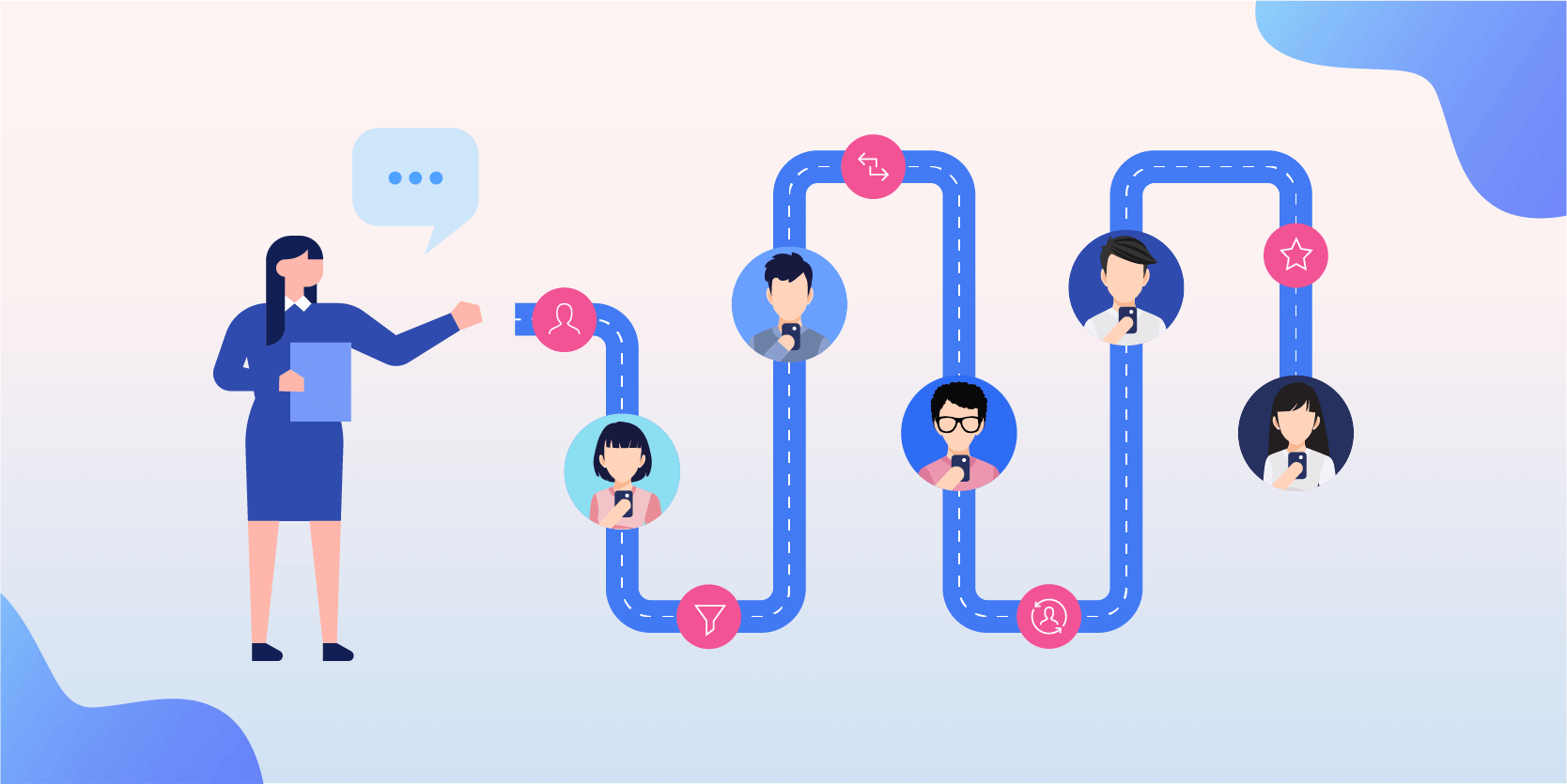Learn how you can Unlock Limitless Customer Lifetime Value with CleverTap’s All-in-One Customer Engagement Platform.

Lifecycle marketing involves understanding and leveraging customer journeys to provide tailored messages and experiences, guiding prospects to become loyal brand advocates. It’s about using insights from these journeys to optimize marketing tactics and foster deeper connections with your audience.
Lifecycle marketing is a marketing approach that involves understanding and catering to the various stages of a customer’s journey with a brand, from initial awareness to post-purchase engagement and loyalty. It focuses on building long-term relationships with customers by delivering personalized and relevant experiences at each stage of the customer lifecycle.
There are various progressive steps (or stages) a customer goes through – from researching to purchasing, from light engagement to loyal use. While there are many approaches to naming these stages, one of the most useful is laid out by marketing analysts Jim Sterne and Matt Cutler in their paper E-Metrics: Business Metrics For The New Economy.01 Their five customer lifecycle stages are:

The goals are really simple – attract and retain your customers. In the process you also want to:
To help you create your own lifecycle marketing model, we’ll go through each stage in detail as well as provide lifecycle marketing examples you can use in your campaigns.
Reach is about building awareness and getting in front of prospective customers. This is the beginning of any customer journey. Social media, paid ads, and word-of-mouth provide the initial boost that brings you to the attention of a user. But then there are many other avenues to gain a better understanding of a product or service. Use the channels that your prospective customers are on. Get the word out!
Tactics
With lifecycle marketing, acquisition is all about attracting those prospective customers and getting them into the sales and marketing funnel so they can be nurtured to the next step: conversion. At this step, it’s about giving them the information they need to make a buying decision. So, blog posts, whitepapers, ebooks, templates, webinars, and anything else that solves a pain point for your customers.
Tactics
Conversion is the stage where you’re convincing the customer to purchase. These prospects are already in your funnel and are receiving your nurture emails, your blog posts, even your in-app notifications and push notifications.
But they may need more than just content to nudge them to buy. According to research, more than 80% of customers need some type of support when making a purchase. And more than half of them will give up and go away if they don’t get that support.02
Tactics
This is the stage where you want to keep the customers you already have and upsell to them. Your customers have purchased from you and are using your app. Your main concern is engaging them so that they use your app and services on a regular basis. The more you can persuade users to return to your app, the better your chances at retaining them and increasing their Customer Lifetime Value.
As product expert Nir Eyal says, the most successful mobile apps are habit-forming. Hooking them into your app so that they use it habitually is key to retaining your users.
Tactics:
You want to transform each paid user into a brand advocate and an influencer in their individual networks. Done correctly, your own users generate buzz via word-of-mouth marketing. Instead of you proclaiming your own app’s value, they do it for you.
But before you ever get there, you need a stellar product and you have to win customers over with excellent service.
More than 70% of customers become loyal to a brand based on how well their customer service performs.03
Tactics

A few more tactics that don’t belong to any specific lifecycle stage:
To maximize influencer marketing effectiveness, look beyond traditional influencers to your loyal customers, employees, and partners. They can organically promote your brand to their networks, offering authenticity and reach that traditional influencers may lack. Incentivize these advocates to amplify your message and leverage their existing connections for greater impact.
A CRM tool is essential for tracking customer interactions across various channels and touchpoints. By documenting these interactions and connecting systems, you can trace complex customer journeys and identify opportunities for engagement. Utilize one dashboard for all key metrics, ensuring seamless monitoring and targeting of customers with high purchase potential through lifecycle marketing campaigns.
To truly understand what is lifecycle marketing, you need to remember that it is an ongoing effort. It’s never linear, it’s cyclical.
As users evolve from leads to paying customers, their needs change and their experience engaging with your brand undergoes a shift. If we do our jobs right as marketers, then we’re constantly trying to address those shifting needs. Every campaign is an opportunity to engage and retain users, increasing Customer Lifetime Value and bringing them closer to becoming brand advocates.
Our Lifecycle Optimizer helps you break down your entire user base into defined lifecycle stages, then create automated marketing campaigns that draw customers into deeper engagement with your brand. Learn more about this feature or schedule a personalized demo to see it in action.

See how today’s top brands use CleverTap to drive long-term growth and retention